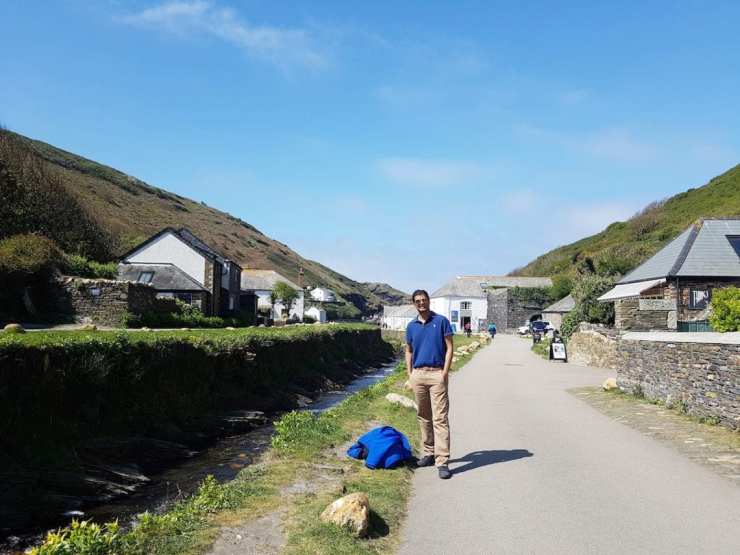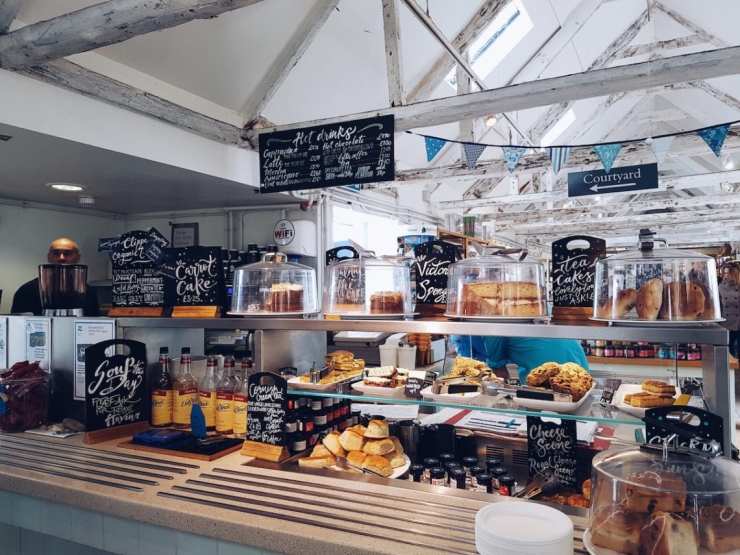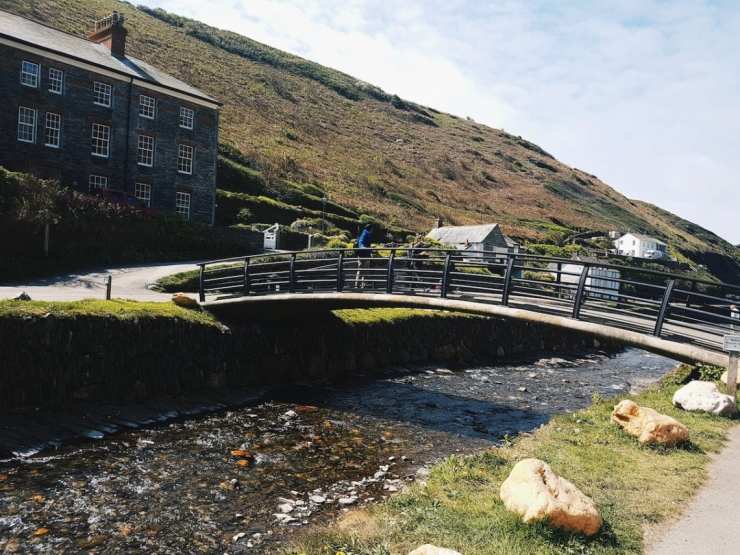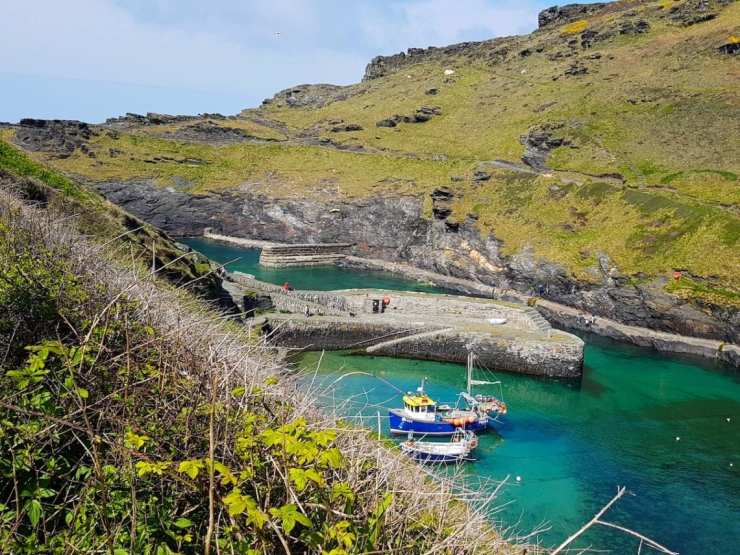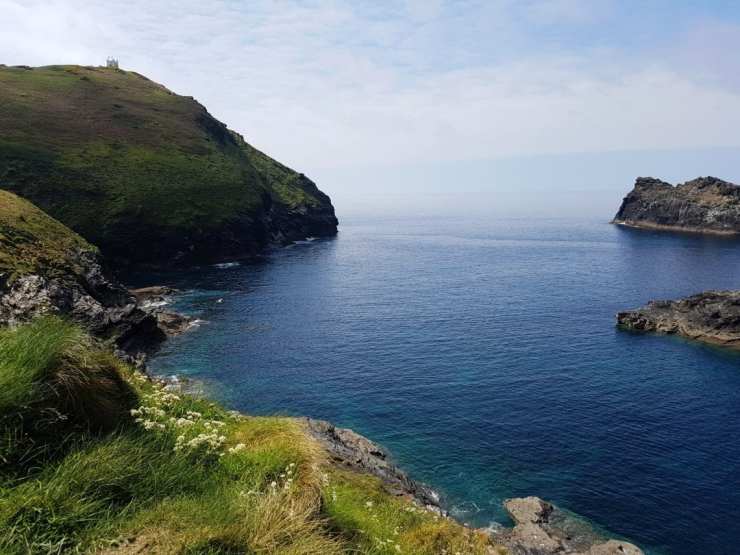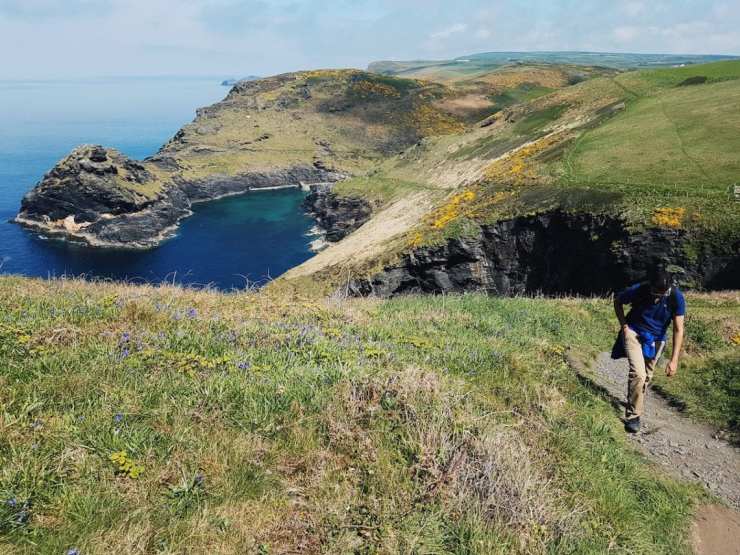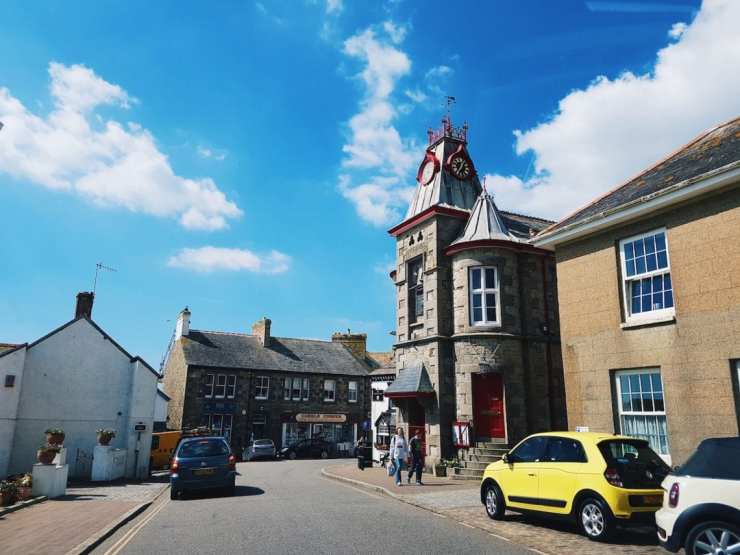- “I found her out there
- On a slope few see,
- That falls westwardly
- To the salt-edged air,
- Where the ocean breaks
- On the purple strand,
- And the hurricane shakes
- The solid land.”
Looking at those mesmerising opal-sapphire hued waters, just like the view that glistened in the midday sun below me, Thomas Hardy would have contemplated upon his chance meeting with the love of his life in the village of Boscastle. Dramatic environs such as these must surely serve as an elixir to seal in young love.
Hardy, if you are not acquainted with the man, wrote Tess of the D’urbervilles and challenged the traditional notions of morality in Victorian England. I have always wondered about it: How is it that Hardy could empathise so with his heroine? Here was a writer, far ahead of the times that he was a product of. I can almost hear Hardy echo Butch Cassidy: ‘Boy I got vision and the rest of the world wears bifocals.’
But the post is neither on Hardy (really, you might say with some disbelief, given that the woman has waxed upon his love for two paragraphs and shall devote another to it), the strain of realism that pervades his writing, nor is it about Tess. It is to take you into the quaint fishing village of Boscastle where Hardy arrived as a young architect in 1870 to work on the restoration of the church of St. Juliot. His prize in the North Cornish village would have been to chance upon a pair of blue eyes (you know who that novel was inspired by) and a swathe of blonde hair that would have his heart for a long time even after the owner of those attributes, Emma Gifford, had died and he had married a second time. Hardy’s heart is buried with Gifford in her grave in a churchyard in Dorset, although his ashes were buried in Westminster Abbey.
When he arrived in Boscastle, he would have come upon the three pubs in the village, a lime kiln and the stonewashed cottages which are said to have been built from stones culled from the ruins of the Botreaux Castle (the village derives its name from the castle).
A lane past Cobweb Inn winds up the village. Now names in the English countryside are literal. You know when you come upon a Two Turn Lane what lies ahead, so when you come upon a name like Cobweb Inn, you can safely expect cobwebs hanging from the eaves and ceilings. Or so you could till the early ’90s when some namby pamby Health and Safety inspectors decided that thick, matted cobwebs hanging to keep flies away from kegs of wine and spirits was not hygienic. They were questioning decades of cobweb-wisdom of men who had run the pub as a wine cellar and flour store dating back to the 1700s.
The passing years have meant that we, as modern-day travellers, got the extras without the cobwebs such as clutches of charming boutiques, a National Trust tearoom and a museum on witchcraft at the entrance of which is the grave of a ‘witch’ called Joan Wytte. That poor 18th century woman’s skeleton had hung for years at the museum till they decided it was not quite okay. The river gushes alongside and if you follow its path up the cliffs above the harbour, you can go on long walks (as we did and it turned out to be so long that our legs would not stop trembling, but more about the trembling later in the next post).
After the quintessential tea & cake stop at the pretty tea room, once you are up on the cliffs, you can spot the Elizabethan harbour, a powerful reminder of times when privateers, wreckers and smugglers carried on thriving business with alacrity. Then you can sit on the cliffs and cast your mind back in time, that is all. Bung in a gale, a stormy sky and turbulent waters lashing against the cliffs. Maybe even imagine the Devil’s Bellows at half tide spouting out water below from the small hole at the bottom of the cliffs, and yes, you will be in another time and age with the necessary ingredient that is at the essence of every wild imagination, the ‘willing suspension of disbelief’.
